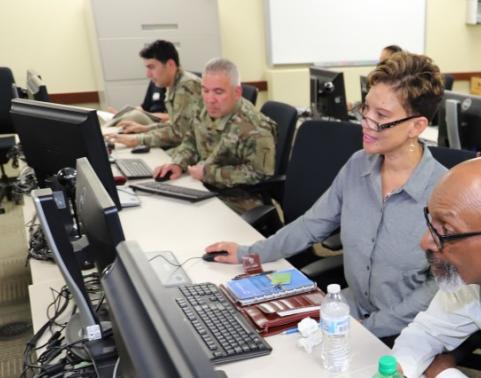Stakeholder meetings show IPPS-A Release 3 Design and Build are on track

ARLINGTON, Va.--The author Paulo Coelho once said, “People never learn anything by being told. They have to find out for themselves.”
For the Integrated Personnel and Pay System – Army (IPPS-A), determining how to proceed with building the system was something learned through trial and error, not through instruction.
One result of the learning experience was the use of Conference Room Pilots (CRP), which are meetings held every other month with the Release 3 build team, the program management office, system integrators (SI) and stakeholders.
“CRPs are part of the SI’s technical approach, and they were included to ensure governance and stakeholder interaction,” said Maj. Brian Hollandsworth, IPPS-A Release 3 design and development lead. “During Release 2, regular stakeholder interactions were held. So, as we entered Release 3, the process was formalized even further to ensure timely feedback.”
The first Conference Room Pilot for Release 3 took place April 15, 2020. The next CRP was scheduled for June 10, with the one thereafter slated for August. The purpose of CRPs is to review system development and functionality to gain subject matter expert feedback. Basically, they are an evaluation of the progress made to that point in the development of the system.
According to Hollandsworth, the first CRP confirmed that the design of the system at that time met the needed functionality, and it highlighted the importance of data correctness.
“CRP 1 also showed how the system integrator was leveraging configuration,” said Hollandsworth. “We saw how the leveraging of that configuration translates into a more sustainable system.”
During these meetings, system integrators ensure the item built meets the requirement of the design, paying particular attention to the usability of the system. However, there is discussion about overarching system considerations for the Army, said Hollandsworth.
“It is imperative that IPPS-A and other Army systems have consistent and accurate data,” said Hollandsworth. “CRPs provide an opportunity to discuss impacts beyond IPPS-A as a system.”
Hollandsworth also said the lessons learned from Release 2 have impacted system design for Release 3 as much as the need for the Conference Room Pilot. He said Release 2 informed the design of Release 3 in certain areas, and the system integrator team paid particular attention to challenges from Release 2 when framing concepts in Release 3.
“The Release 3 team noted early the requirement for data fixes by developers to correct issues with Soldier records,” said Hollandsworth. “The Release 3 team has built in configurable ways to make those updates at the field level, while building an auditable system and maintaining integrity of the data. Additionally, the lessons learned for assignments and promotions have shaped how Release 3 will handle these areas.”
Related News
-
Allison Gregory excels at contracting — and crafting
June 17, 2025As the contracts management division chief for Integrated Personnel and Pay System – Army at PEO Enterprise, Allison Gregory is responsible for guiding acquisition strategies that support big-picture goals, making sure the right contracts are in place when they’re needed and ensuring software deliverables are high quality and mission ready. -
Inside BATDOK-J’s Soldier Touchpoint
April 28, 2025Soldiers at Fort Campbell’s 3rd Mobile Brigade Combat Team of the 101st Airborne Division (Air Assault) experimented with the Battlefield Assisted Trauma Distributed Observation Kit-Joint (BATDOK-J) application during a 21-day Soldier Touchpoint that started March 18. Soldiers assessed how BATDOK-J integrates with the Army’s Health Assessment Lite Operations (HALO) electronic health record under realistic, operational environments. -
8 questions with IPPS-A's Sabrina Simpson
March 4, 2025For Sabrina Simpson, every day is an opportunity to combine her love of numbers with her passion for supporting Soldiers.
Work for Us
Join a winning team! Search for job opportunities with PEO Enterprise.
Work with Us
Help support important missions. Explore ways your company can work with PEO Enterprise.